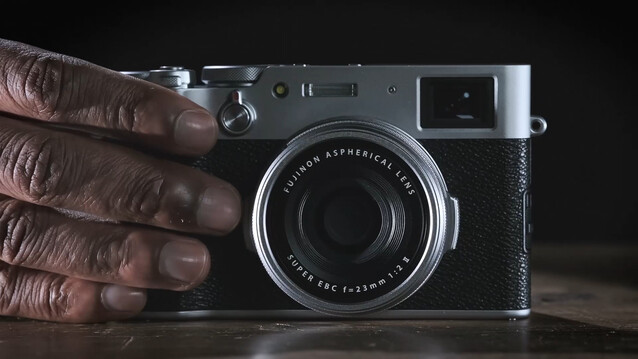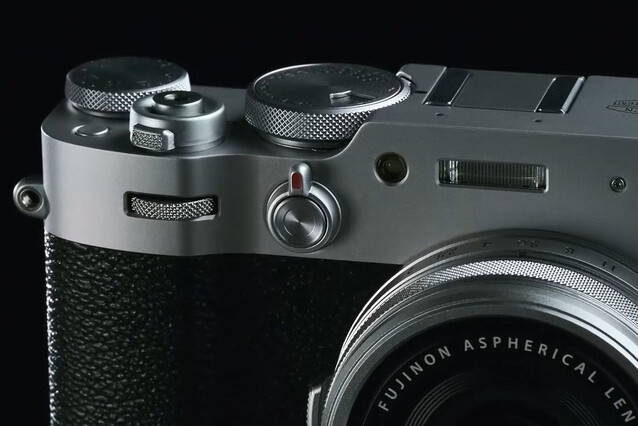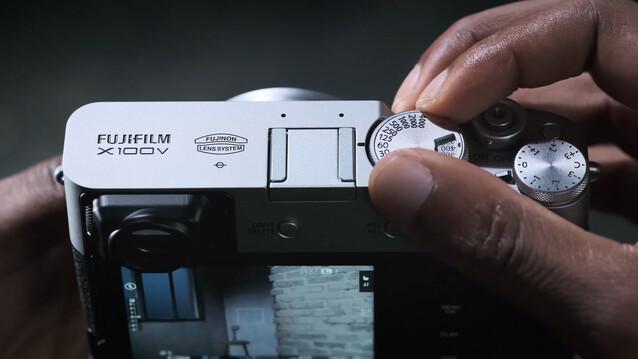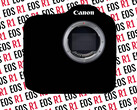1. The leaf shutter is silent and shake-free
The Fujifilm X100V (curr. $1,895 on Amazon) has a leaf shutter built into the lens instead of a focal plane shutter, like in most other cameras. While this choice was likely made in the name of compactness, it also helps Fujifilm's best travel and street photography camera fly under the radar with a silent shutter action.
Another benefit of the leaf shutter is that it helps reduce shutter shock and camera shake, which is especially helpful for getting crisp images at slightly lower shutter speeds without IBIS. It also allows for flash sync speeds of up to 1/4000s, which is well beyond the 1/250s that is typical for focal plane shutter cameras.
2. Small footprint for ultimate pocketability
Sometimes having a big camera body is a good thing — people take you more seriously as a photographer and might give you more time or space to get a certain shot. There are, however, also times when having chunky camera gear could get you in trouble.
The Fujifilm X100V is small enough that you could easily pass it off as a point-and-shoot camera for family travel photos or the like, but its crisp 26.1 MP APS-C sensor and sharp 35 mm lens allow you to take professional-grade photos despite the 5.04 inch (12.8 cm) × 2.94 inch (7.47 cm) × 2.10 inch (5.33 cm) form factor.
The Ricoh GRIII Street Edition (curr. $1,016.95 on Amazon) serves as a worthy opponent to the tiny X100V, although it also adds OIS into the mix for better low-light performance.
3. A built-in ND filter opens up daylight shooting at low aperture
The Fujifilm X100V is a bit of a do-it-all camera, despite the fixed prime lens. While it clearly wasn't designed for video shooting, the built-in neutral density filter allows photographers and videographers alike to shoot brighter scenes at lower apertures.
The built-in ND filter of the X100V can be easily disabled, but it drops the exposure of the scene by four stops, allowing full use of the F 2.0 aperture lens for video, even in bright environments. It is also helpful for landscape and nature photographers that want to get those wispy waterfalls on a sunny day or play with light painting in less-than-ideal conditions.
4. Tactile controls and a hybrid viewfinder deliver the best of both worlds
Part of the Fujifilm X100V's appeal is the retro looks, but the vintage vibes don't stop there. The analogue-inspired dials and the hybrid viewfinder give photographers a familiar feel and a direct physical connection to the camera without compromising on usability or speed of operation.
While the EVF has taken over modern photography, some users prefer the instant response and sharpness of an optical viewfinder. With the X100V, you don't have to choose between the two. Switch to EVF mode to preview your exposure and colours, or use the OVF to hone in on composition without distraction. You can even blend the two, with ERF (Electronic Range Finder) mode, that displays a small preview and an overlay in the OVF.
That's not to say the Fujifilm X100V feels old to use — it actually offers a lot of flexibility in its control scheme. The little digital rangefinder has all the amenities you might expect from a modern mirrorless camera, including a tilting touch screen, replete with swipe gestures, alongside a host of customisable physical Fn buttons.
The control ring on the lens can also be remapped and assigned to different functions, with a toggle on the front of the camera to switch between the functions.
If you're a video nerd, the Fujifilm X-S20 is $1,399 with a 15–45 mm kit lens on Amazon and offers similar retro looks and tactile controls, but with better video features.
5. A fast, versatile lens and sensor combo with film simulations for in-camera perfection
There's no perfect focal length for all scenarios, but it's safe to say that the 35 mm-equivalent FOV from the 23 mm Fujinon F 2.0 lens strikes a good balance between wide and zoom. It's close enough to a nifty fifty that you aren't losing too much detail if you decide to crop in a little on portrait photos, but it's also wide enough for most scenes.
The 26.1 MP X-Trans CMOS 4 backside-illuminated sensor and the X-Processor 4 are also plenty fast, managing up to 11 fps shooting in JPEG and RAW modes, with the electronic shutter bumping that up to 30 fps, albeit with a 1.25× crop. The sensor is also much bigger than on comparably-sized cameras, allowing it to take advantage of the respectable light-gathering capabilities of the F 2.0 aperture.
There's also the matter of Fujifilm's ever-popular film simulations, which help take the hassle out of editing by giving photographers a high degree of control over the JPEGs produced by the camera. Combined with Fujifilm's excellent colour science, the film simulations can be a major boon, especially for anyone looking to get a consistent look out of their images without resorting to hours in Lightroom or Darktable for edits.


















